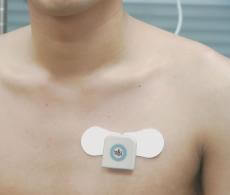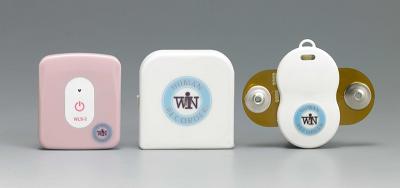
If capturing every moment of your life on camera isn’t enough to satisfy your recording needs then you should take a long deep look inside yourself. And then record that. According to Nikkei, Japanese venture firm WIN Human Recorder Ltd is set to bring a health monitor patch to market that is capable of keeping tabs on all your vitals. The HRS-I is a small (30mm x 30mm x 5mm) lightweight (7g) device that adheres to your chest and relays the data it collects to a computer or mobile phone via wireless connection. While the HRS-I only directly monitors electrocardiograph information, body surface temperature, and movement (via accelerometers), it can connect to sensors for heart rate, brain waves, respiration and many other important health indicators. WIN is selling the HRS-I for around ¥30,000 (~$330) and providing monitoring software for around ¥10,000 (~$110). The company hopes for ¥1 billion in sales in the first year, and ¥5 billion in three years, presumably by marketing the device to the ever growing healthcare sector.
Originally developed at the University of Tokyo’s Advanced Institute of Wearable Environmental Information Networks, the HRS-I bares a remarkable similarity to Toumaz Technology’s Digital Plaster. Both are low cost wearable devices that provide some direct monitoring and serve as a hub for further sensor data. They both use wireless connections to relay data, last for a few days on a single charge, and they both are aimed at remotely monitoring patients in hospitals, nursing facilities, and homes. Having talked with Keith Errey of Toumaz, however, I believe Digital Plaster is going to be less expensive and will be marketed as a disposable item. Also, I’m uncertain if Toumaz would adopt a monthly payment system for their support software. There are undoubtedly more distinctions that will become readily apparent as Digital Plaster moves from clinical trial to market in the next year or so.

You can’t really establish a trend with just two data points, but I’m inclined to think that the appearances of Digital Plaster and the HRS-I are good proof that the wearable health monitor is going to be a staple of hospital stays in the future. The more information doctors have at their disposal the better decisions they can make. When paired with software designed to help doctors take advantage of bioinformatics the wireless health monitor could become a key ingredient in revolutionizing (and digitizing) health care. I’m certainly looking forward to an upgrade to Medicine 2.0…but not to the affect it may have on Facebook Status updates:
“Aaron Saenz is showing irregular brain wave activity.” [Comment * Like * Share]
Eh, it’s complicated.
[image credits: WIN Human Recorder Ltd via NIKKEI]


